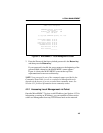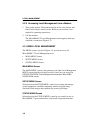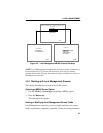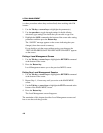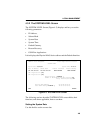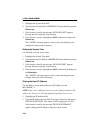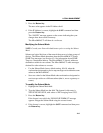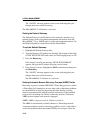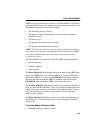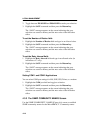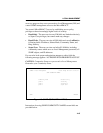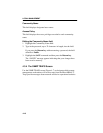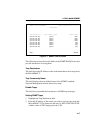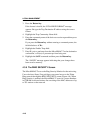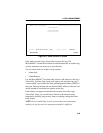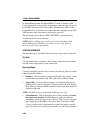
LOCAL MANAGEMENT
4-13
ABRP locates the problem and corrects it, the MicroMMAC-T generates
traps to provide the network’s designated remote management station with
information regarding the incident, including:
• The beaconing device’s address
• The address of the beaconing device’s Nearest Active Upstream
Neighbor (NAUN)
• The beacon type
• The port(s) and/or modules left in bypass
• The duration of the beaconing condition
NOTE: To prevent users from re-inserting a faulty station that could bring
the network down, all objects identified as faulty and disabled by ABRP
will remain disabled until a network manager repairs the fault and
re-enables the object.
The MicroMMAC-T provides the following ABRP management fields:
• Beacon Recovery
• Number of Retries
• Retry Interval
The Beacon Recovery field indicates the current status of the ABRP at the
device. The ABRP occurs for the MicroMMAC-T ports and STH ports
under MicroMMAC-T control only. ENABLED is the default setting in
this field and indicates that the ABRP is currently active at the device;
DISABLED indicates that the ABRP is inactive at the device.
The Number of Retries field displays and lets you modify the number of
times you want the MicroMMAC-T to try to re-enable a disabled port from
which a beaconing condition was detected. The default number of retries
is 4. You can enter values from the range specified in the parentheses
(000-100, 999: infinite).
The Retry Interval field displays and lets you modify the time delay (in
increments of 7 seconds) between ring port retry attempts. The default
setting is 21.
To set the Beacon Recovery field:
1. Highlight the Beacon Recovery field



